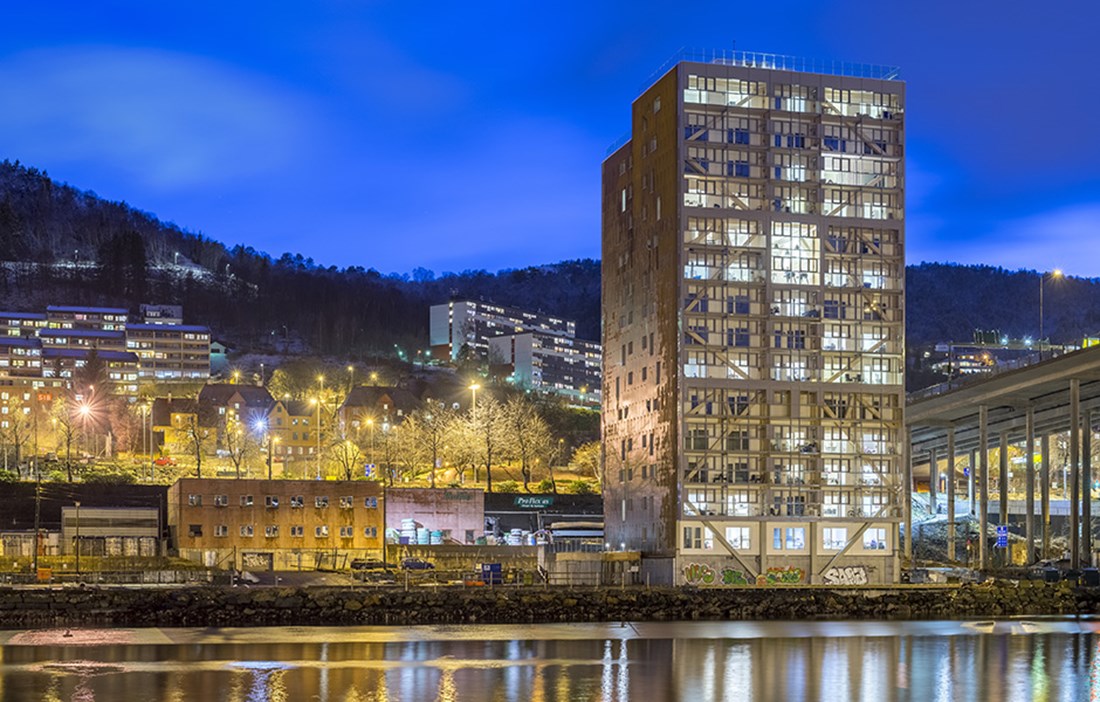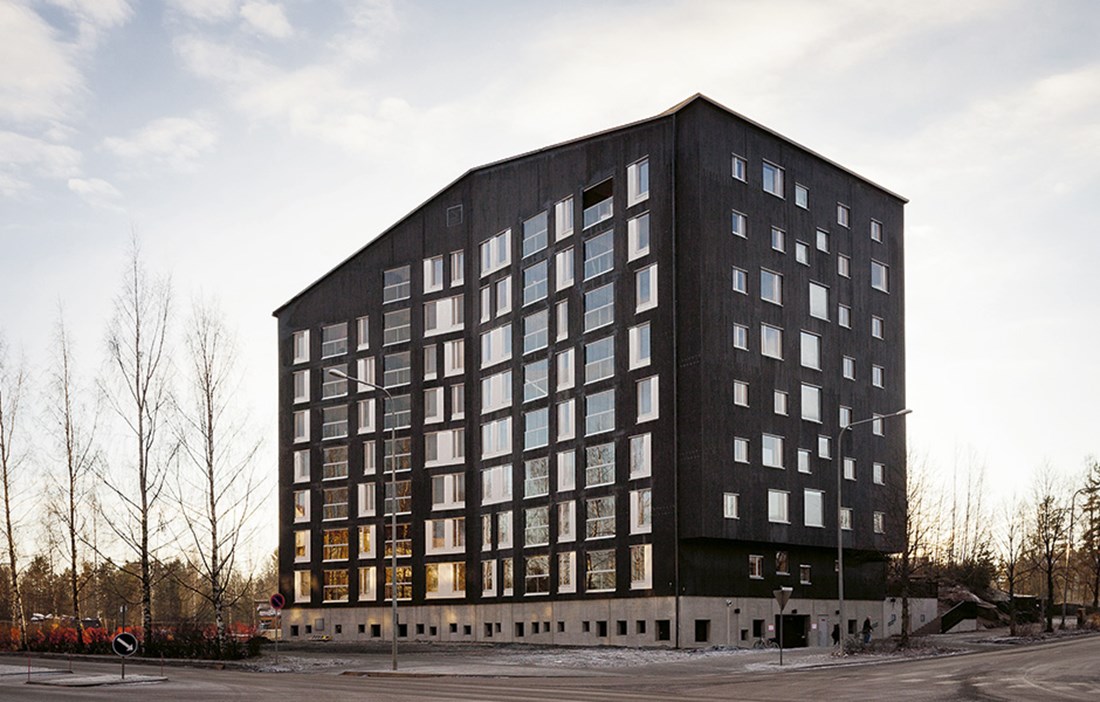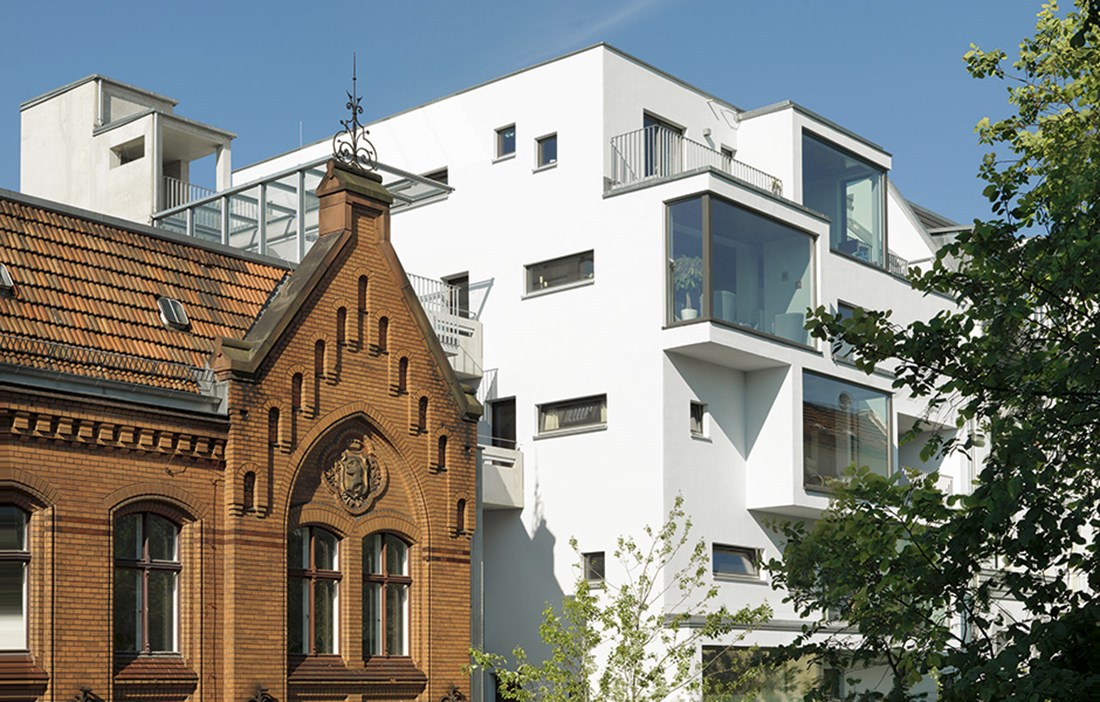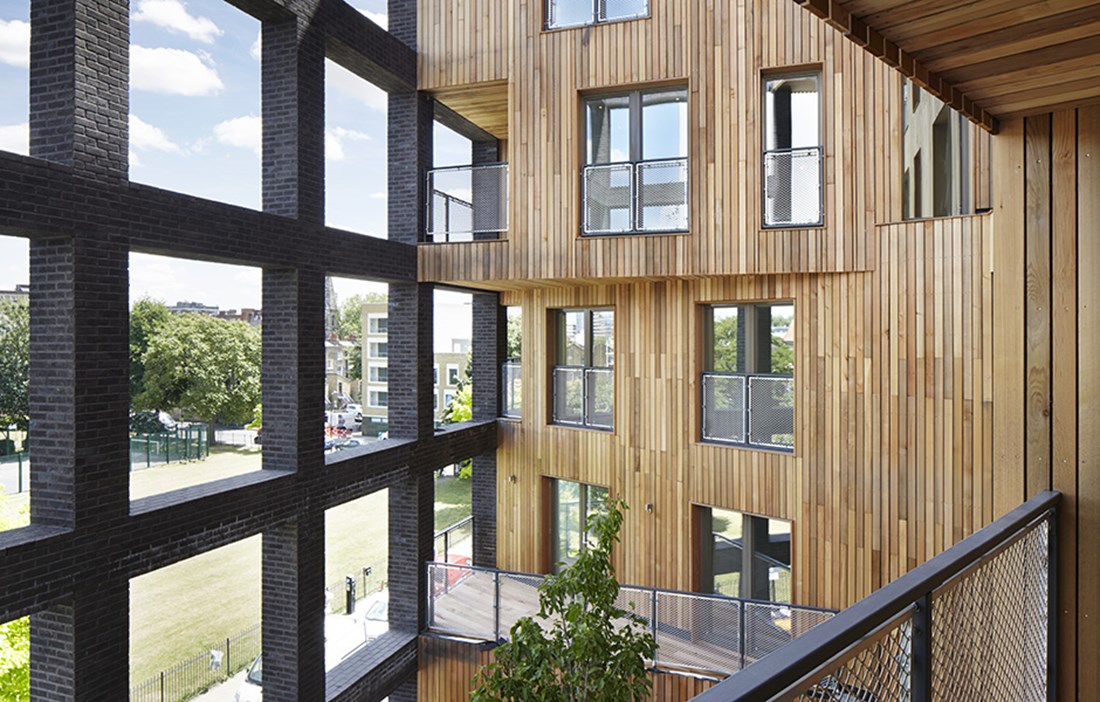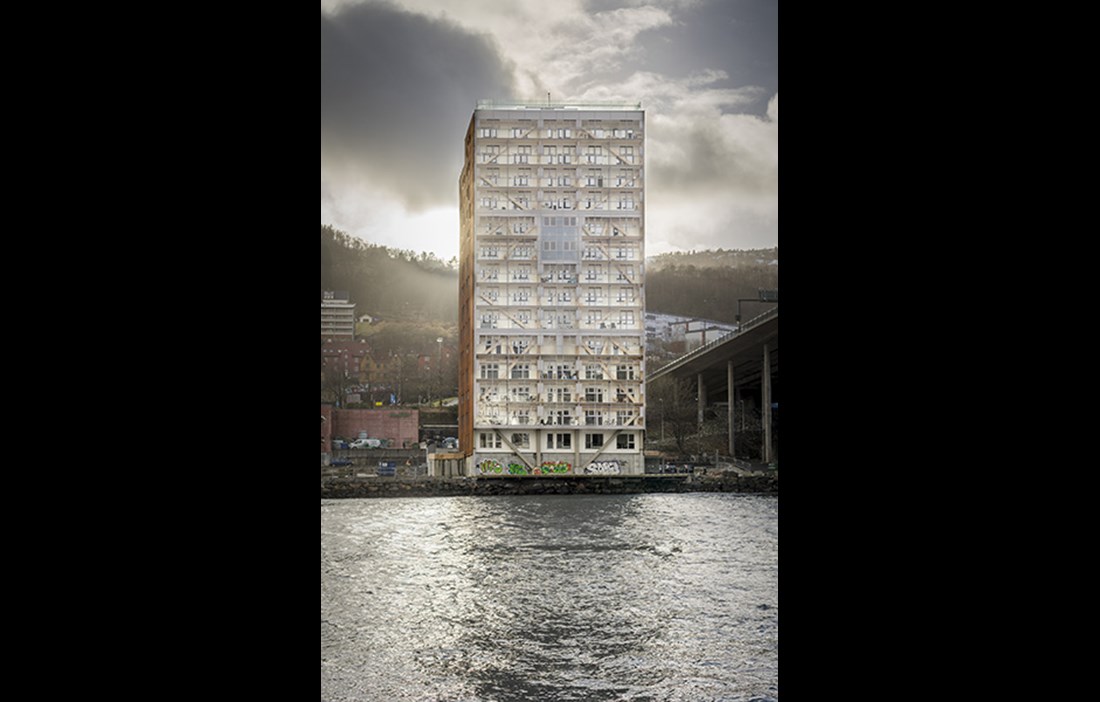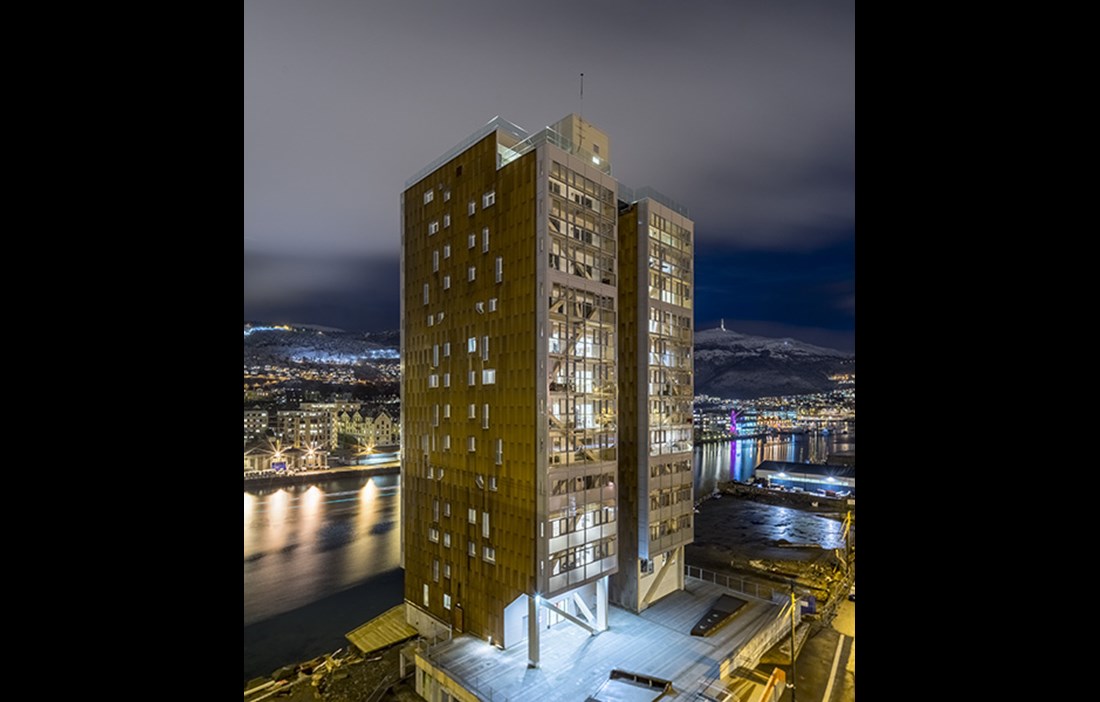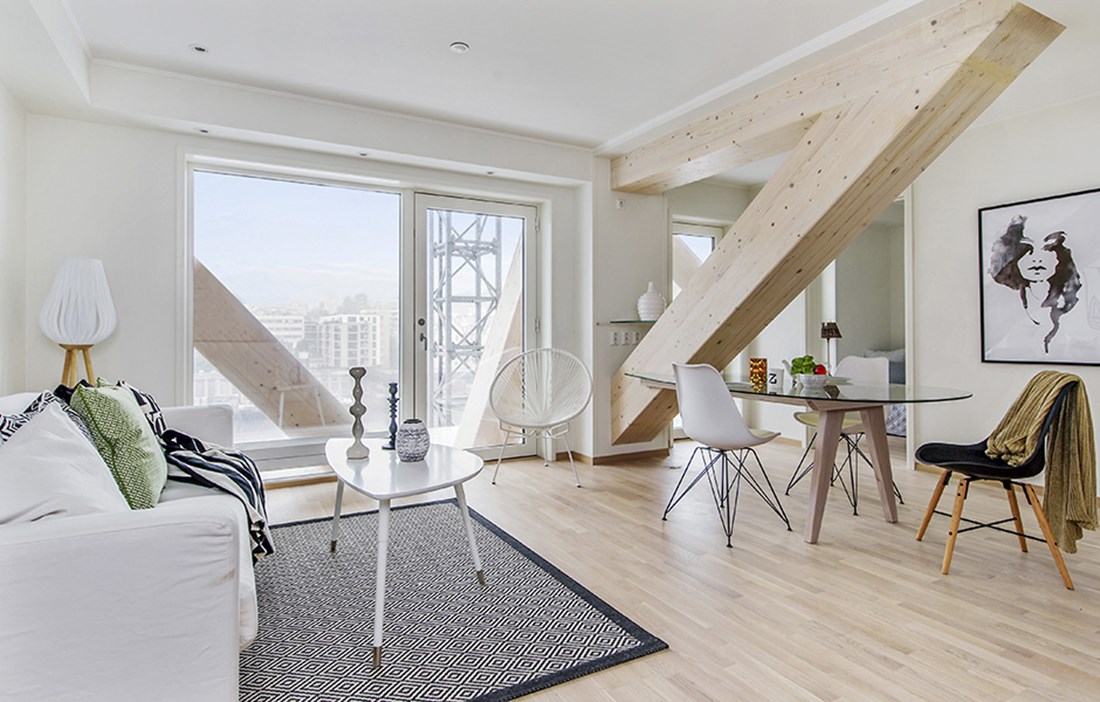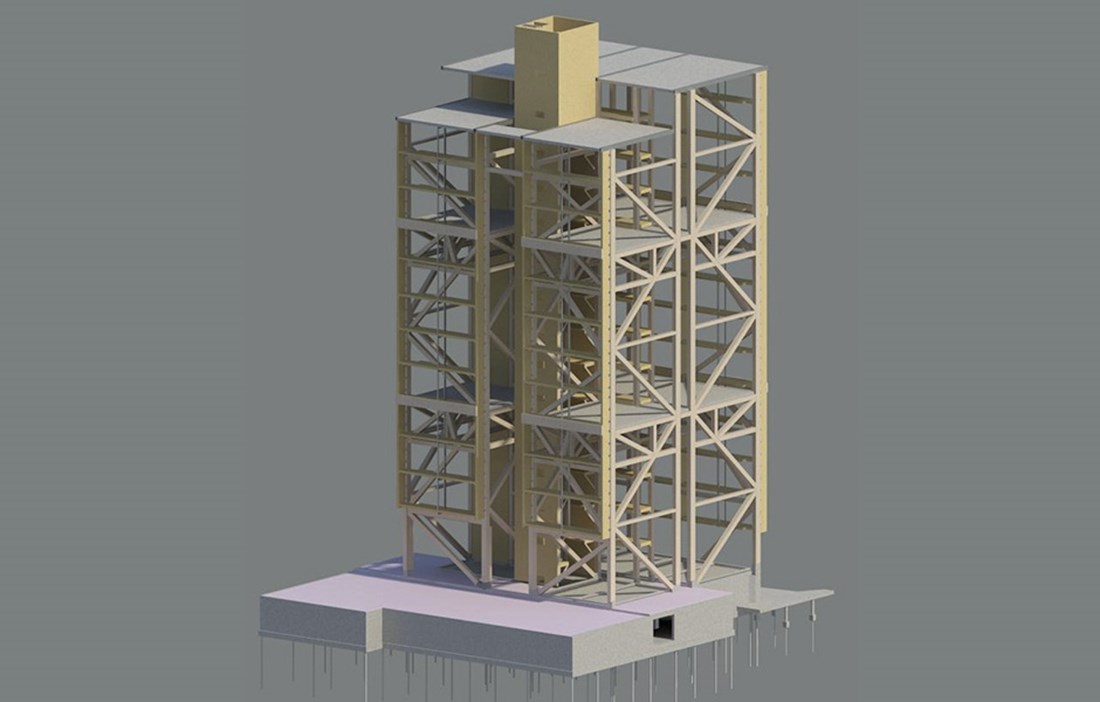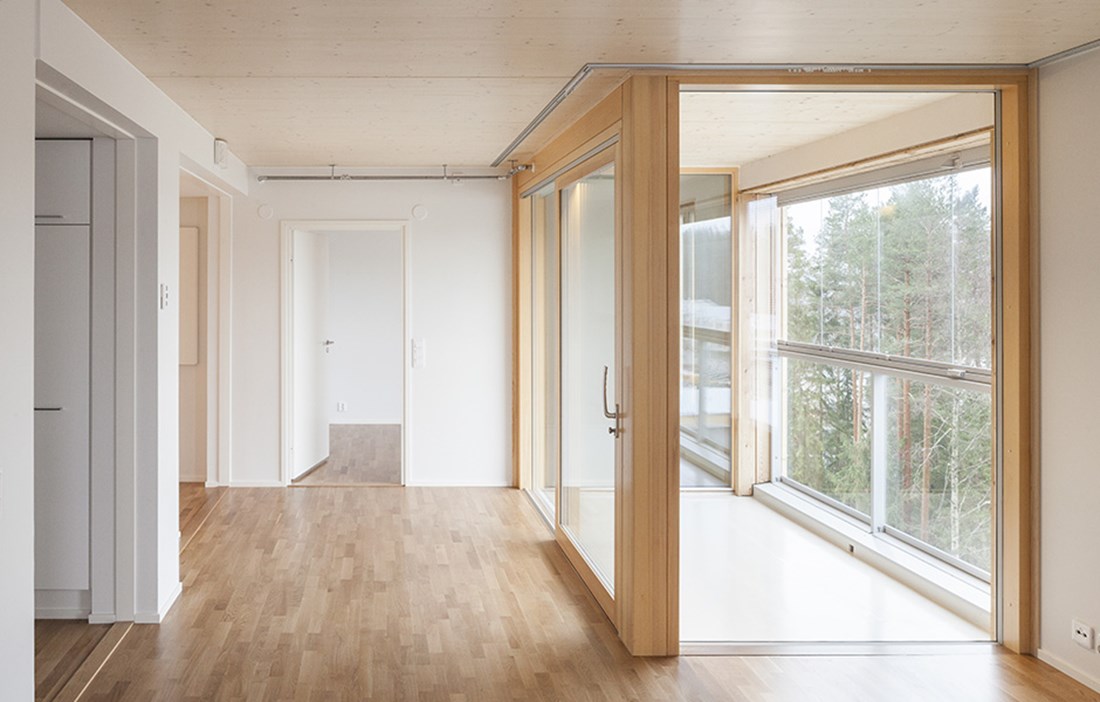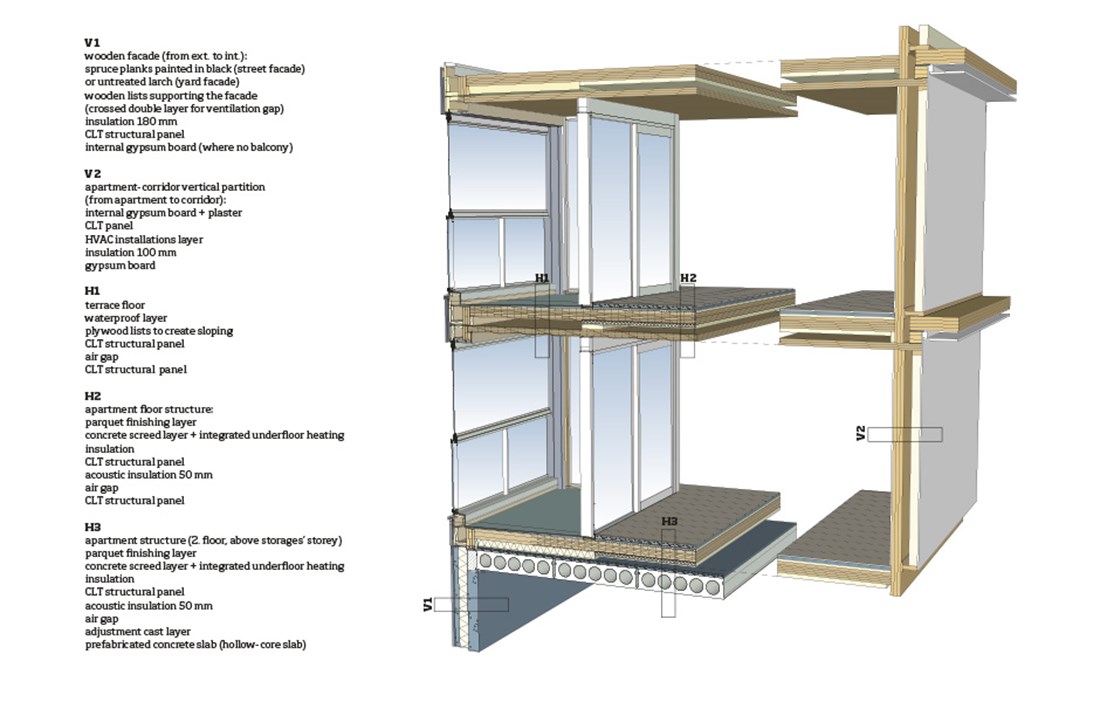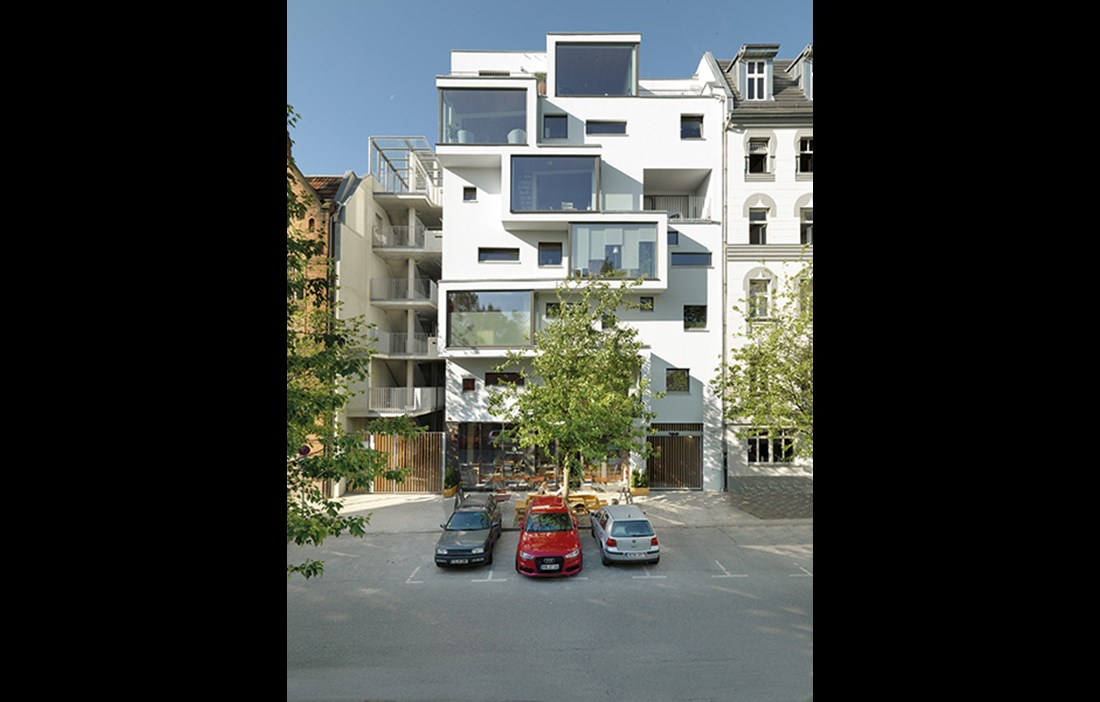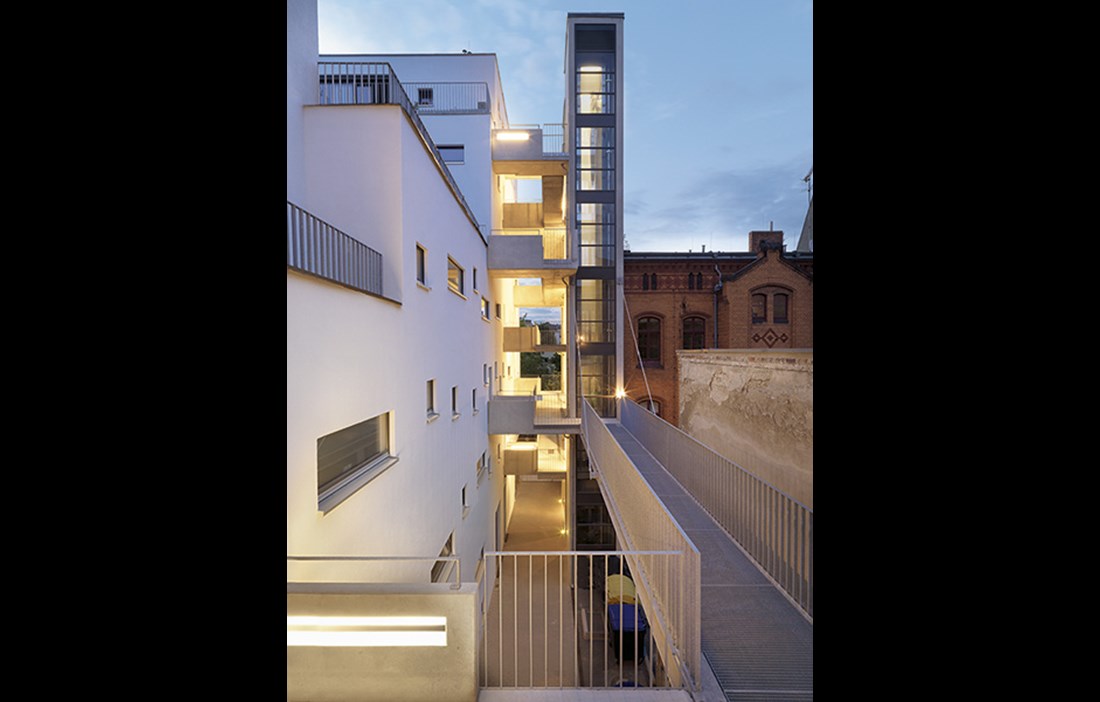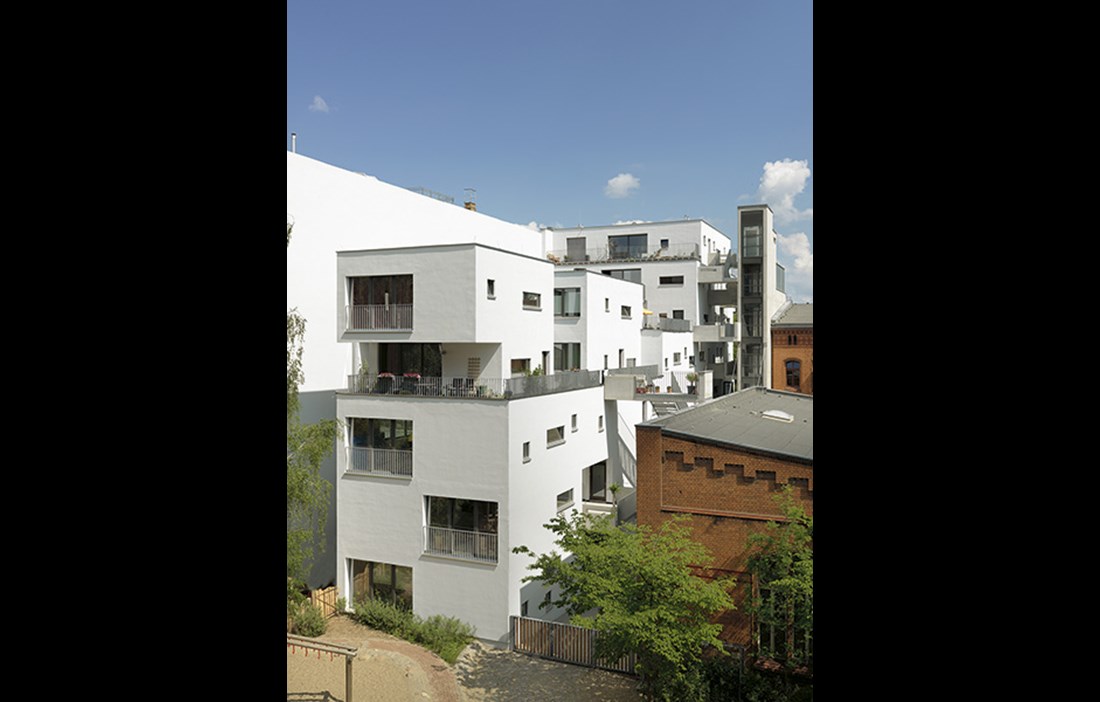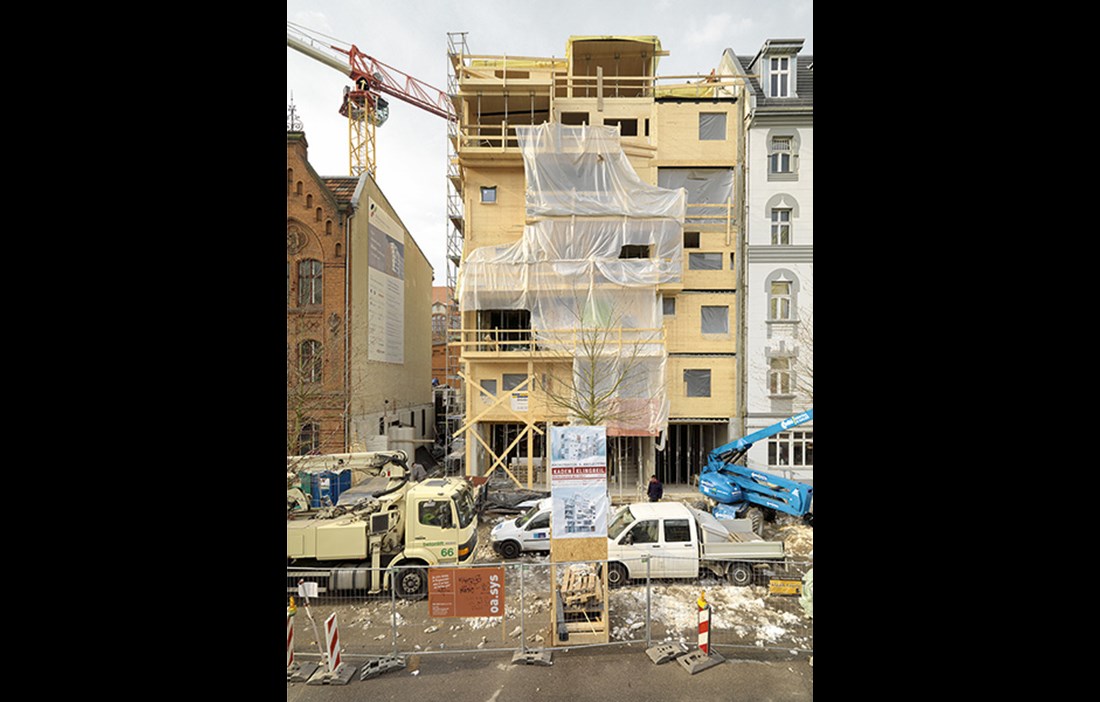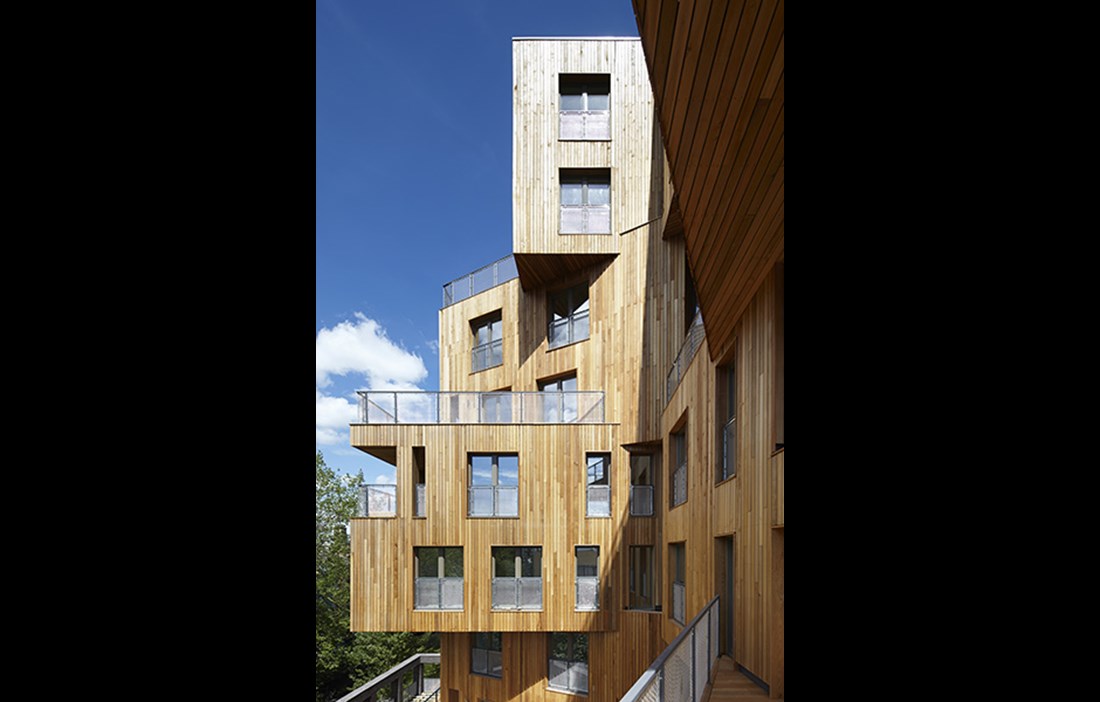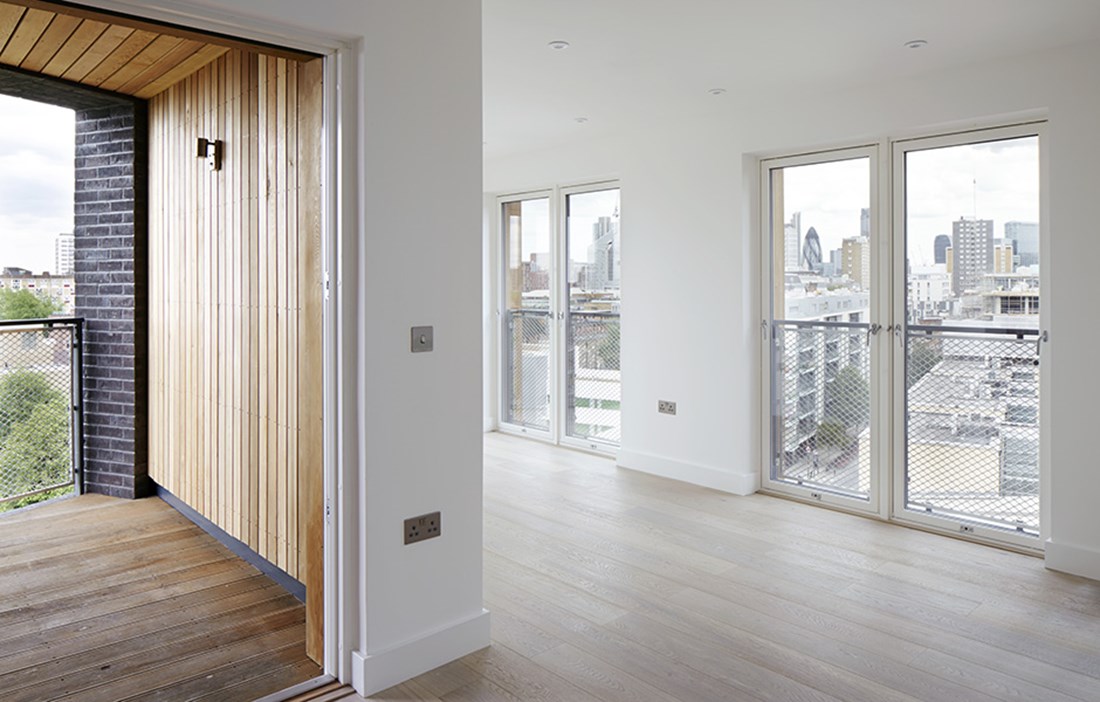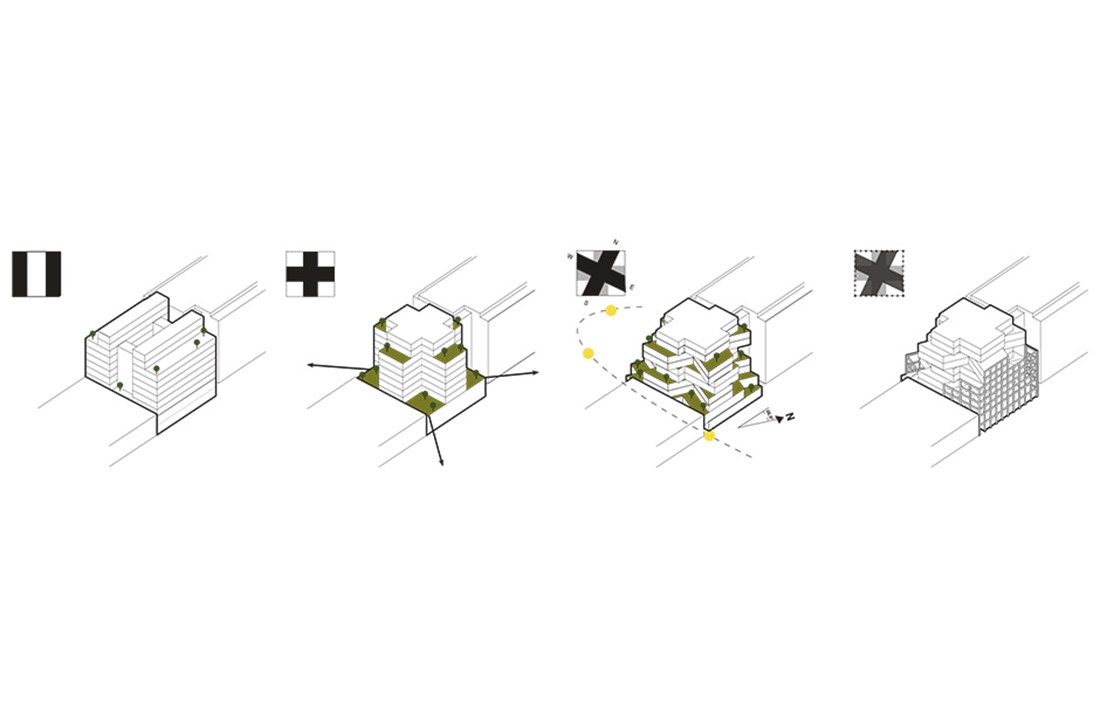VARIOUS PARTS OF the world are erecting taller wooden buildings than could ever have been imagined a few decades ago. The tallest so far is the recently built Treet, a 45 metre, 14-storey block in Bergen. There are even plans to build wooden structures that fall into the category of skyscrapers, i.e. buildings over 100 metres high. In Canada a detailed investigation, based on research, has shown that it is both technically and economically viable to build 30-storey buildings around a wooden structural frame and that this brings major environmental benefits. The American architectural firm Skidmore, Owings & Merrill has conducted a similar study of a 42-storey building.
In Sweden, as in the rest of Europe, stone, brick and concrete have long been the dominant construction materials for apartment blocks. A rapidly growing population in the large cities and a threatening climate crisis are forcing us to think along new lines. Greater use of wood as a construction material for buildings is part of the solution. Supply is good, the material is green and it is easy to work with in a factory or on a building site. The fact that living in wooden homes is also pleasant and comfortable has been confirmed by Technische Universität Graz in Austria.
Wood is a light material in relation to its strength, it has good thermal properties and is durable as long as it is constructed and maintained properly. Growing trees absorb large quantities of carbon dioxide, which is then stored in the material. Wood has little environmental impact during manufacture, transport and installation compared with steel and concrete. With smart forest management, harvesting and processing, increased use of wood can play a major role in mitigating the climate crisis.
Thanks to technical advances, wood is in a position to seriously compete with concrete and steel as a structural material for multi-storey buildings. To highlight the trend, we are showing how in four different countries four high-rises have been constructed based on the local conditions. Three of the buildings are freestanding and one is located in a dense urban environment. In Bergen the high-rise was built from box units within a structural glulam frame. Outside Jyväskylä in Finland, six to eight-storey buildings are being built using structural box units in wood. The block we focus on in London has been given an interesting form through the ingenious rotation of a cruciform layout, which was made possible through a hybrid design using steel and CLT. The building in Berlin comprises one seven- and one five-storey block and stands in a dense area of older housing.
THERE ARE SEVERAL CHALLENGES to going larger and higher with wooden buildings. Large and tall buildings made from wood are light and so wind loads are a greater problem than for buildings in heavier materials. For the same reason, sound insulation between apartments is a more complicated issue. The risk of accidental fires and the spread of fire has to be minimised, and the structural elements must be able to handle loads and deformations, although this is true whatever the construction material.
Scandinavia is dotted with quaint old towns that are a jumble of wooden buildings with various uses. A fire in such a dense district can have catastrophic consequences. Sweden was early to adopt local fire regulations and since 1874 there has been a fire statute covering the nation’s towns and cities. National building regulations were introduced in the 1940s. In principle, it was previously impossible to build higher than two storeys with a wooden structural frame, but in 1994 the conditions changed as the standards were brought in line with EU regulations, which are function-based. It is now permitted to go high and dense in wood, as long as the fire safety requirements are met.
Load-bearing and fire division structures must have sufficient fire resistance to maintain their intended function for the time stated in the building relations. Wooden structures can be protected through cladding in appropriate materials, usually plasterboard. In a fire, thick timbers char on the surface, which slows the burning process. Applying knowledge about the charring rate, load-bearing structures can be sufficiently dimensioned to retain their integrity in a fire. This method was used for the glulam framework that can be seen on the outside of the building in Bergen. It was also one of the alternatives in the Canadian study into a 30-storey building.
An increasingly common fire safety method is to equip the buildings with sprinkler systems, with apartments getting domestic sprinklers and more vulnerable locations having automatic sprinkler systems. The use of sprinklers allows more unprotected wood to be used, for example on façades.
PRACTICALLY ALL LOW-RISE HOUSES in the USA have long been built using timber-frame systems based on 2 x 4 inch joists. These systems have been standardised, which makes things simpler at every stage from sawmill to construction site. The same systems have also long been employed for wooden buildings over several floors.
In Sweden too, timber-frame systems have dominated low-rise production over the past 50 years, but the level of standardisation has not been as high. When, in the 1990s, we began building multi-storey apartment blocks with a wooden structural frame, we copied the American way of building. This delivers light, material-efficient and flexible structures, but cannot normally be used for taller buildings higher than four or five storeys. The five-storey section of the building in Berlin used this system, with joists of 45 x 180 millimetres.
The development of solid wood systems began in the 1990s in many countries, with Switzerland and Austria leading the way. The first of these comprised low-grade sawn boards nailed, and later pegged, together in parallel, known as ‘Brettstapel’. The panels are used in walls that are insulated on the outside. As a floor structure, they can be combined with cast concrete to form a composite construction that works as well as reinforced concrete, but with the wood panel replacing the rebar. To get the wood and concrete to work together, sections are cut out of the wooden panel, or it may be furnished with various types of mechanical tie, or sometimes both. A variant where the boards are screwed together was used in the building in Berlin.
During the first half of the 1990s, Cross Laminated Timber made its first appearance. In CLT, boards are layered at right angles and glued together. As sheets and panels, the material opens up many architectural and structural opportunities. Used in floor structures and walls, it can handle heavy loads and has a stabilising effect. Detailing and joints are easy to execute. Box units made from CLT are light and stable to transport. Sound insulation is simplified since the walls and floors form double structures.
All four of our reference buildings use CLT in one way or another. In recent years, work has begun on developing hybrid CLT systems. These are systems in which CLT works with other materials, such as concrete and steel, to take up loads and provide stability. For floor structures, CLT can be combined with concrete in the same way as Brettstapel. The carcass of the building in London is a hybrid of steel frames and CLT panels.
AROUND 10 PERCENT of apartment blocks in Sweden currently have a wooden structural frame. Glulam, CLT and hybrid constructions where wood works with other materials are seen as the solution for larger and taller buildings. With box units, the process can largely be industrialised, quality can be guaranteed and costs kept down. Environmental considerations, the prevailing housing shortage and the lack of land in the big cities are all driving the increased construction of large and tall apartment blocks with a wooden structural frame. It is important that we in Sweden make sure we are part of this trend.
Below we present four European buildings of different styles and designs.
Treet by Artec in Bergen, Norway
The world’s tallest wooden building is located in Bergen and stands around 45 metres high. It has 14 floors and 62 apartments, and is split into three similar parts as it rises. An external glulam framework and two stabilising floors in concrete handle vertical and horizontal loads.
Four prefabricated housing modules with a CLT carcass were placed on top of each other on a concrete deck that forms the ceiling of a basement level in concrete. The external framework was built five storeys high on piled foundations. Within this, and tied to the upper reinforced part of the framework, a special module was fitted to form what is known as a ‘power storey’. A concrete slab was then cast onto this. The fifth and top housing module is thus supported by the framework, rather than the underlying modules. This pattern is repeated with other modules and the framework that is mounted above. This limits the vertical stresses on the modules and the consequences of any fire.
The framework, with its inset steel gusset plates, must be able to retain its load-bearing capacity for 90 minutes in the event of a fire. To calculate effective dimensions, it is assumed that glulam chars at a rate of around 0.7 millimetres per minute. Secondary load-bearing structures, such as corridors and balconies, must retain sufficient integrity after 60 minutes. The stairs and lift shaft are made from CLT treated with a fire-retardant lacquer, and the building is fitted with sprinkler systems. On the outside of the framework, glass has been fitted on two façades, while the gable ends are clad in weathering steel plate.
Puukuokka by Oopeaa in Jyväskylä, Finland
Outside Jyväskylä in the suburb of Kuokkala, three apartment blocks are being built in wood, six to eight storeys high. The first was completed in 2014. Prefabricated modules in CLT were supplied by Stora Enso, which developed the system under its Urban MultiStorey concept.
An express aim of the project is to trial a new construction process for affordable and eco-efficient housing. Prefabricated modules manufactured indoors and fully prepared for installation at the construction site guarantee high quality, avoid weather issues and mean minimal build time on site. Each apartment comprises two modules. One contains a living room and bedroom, plus a balcony. The other houses the bathroom, kitchen and hall. Installations are accessible from the corridor which, like the stairwell and lift shaft, is made from CLT.
In the apartments, the surface of the wood on the ceiling has been left visible, and the floors are also wood. The walls are clad in plasterboard, partly so they can be painted and partly to meet fire safety standards. The CLT frame serves both as a load-bearing and stabilising element, as well as providing a vapour barrier and partial heat insulation. A layer of concrete, with integral underfloor heating, is cast on top of the supporting floor to improve impact sound insulation.
The buildings are fitted with domestic sprinklers. Facing the courtyard, the façade material is untreated larch. The majority of the balconies are on this side, with most inset and fitted with sliding doors. This opens up the apartments to the surrounding countryside. On the street side, the spruce façade is treated with a dark paint. The façades were delivered as prefabricated units and hung using concealed fittings.
The project has been carried out with the support of a special ‘lease-to-own’ funding system. The apartments are underwritten by a state-backed loan at a low interest rate and for 20 years the tenants pay this loan off through their rent. After that period they then own their apartment. In 2015, the buildings were awarded the Finlandia Prize for Architecture and the Finnish equivalent of the Swedish Timber Prize.
C13 by Kaden+Lager in Berlin, Germany
In Prenzlauer Berg, a district of Berlin, a building was constructed in 2012–13 that houses apartments, offices, a nursery, restaurants and more. It comprises two blocks, a front building with seven storeys and a rear one with five storeys. They are built in wood on a concrete basement level which includes a garage. The building is surrounded by older homes. For fire safety reasons, the entrances and lift are sited off external concrete stairs and ramps, and they are attached to an older neighbouring building. This is a prime example of how new wooden buildings can be inserted into older cityscapes.
Practically all the load-bearing structures are wood. All the columns are glulam, except for those in the garage and ground level, which are reinforced concrete. The load-bearing walls in the front block are CLT with a thickness of 85–100 millimetres. The walls of the rear block are a prefabricated, mineral wool-insulated, timber-frame structure, 180 millimetres thick. To meet fire safety regulation REI 90, both types of walls and the glulam columns are clad with two 18 millimetre thick plasterboard sheets. The external walls on both structures are 18 millimetre plasterboard clad in mineral wool, 140 and 40 millimetres thick respectively, with a 15 millimetre layer of render on the outside.
Sweden has seen problems with this type of façade solution. If it is done wrong, water can penetrate through imperfections in the render and cause damp damage to the underlying plasterboard or the wooden structural frame.
The floor structure is a composite of concrete and wood. The Brettstapel panel is 140 millimetres thick. On top of this, and tied to it, is a 120 millimetre concrete slab. This ensures sufficient load-bearing capacity. To achieve the necessary impact sound insulation, there is then a 30 millimetre thick layer of acoustic insulation, followed by 74 millimetres of cast concrete, with inset heating pipes. The wooden underside is coated with a flame-resistant transparent fire safety treatment. The total thickness of the structure is only 404 mm, which is slim compared with the wooden floor structures that are usually preferred in Sweden. The hybrid structure of two materials, wood and concrete, creates an effective floor solution.
The Cube by Hawkins\Brown in London, UK
The UK’s tallest wooden building stands on Wenlock Road in the London borough of Hackney. The building, called The Cube, is 33 metres high and has 10 storeys.
The architecture is striking. The floor plan is cruciform with slightly offset arms. Rotating them in pairs provides privacy from the neighbours while also creating terraces with a different orientation. The apartments enjoy plenty of natural light through their large windows.
Stairs and lifts have been incorporated within a concrete core. Otherwise, the building is a hybrid CLT construction. Steel frames enclose panels of CLT and these are joined with strong fixings. This way of building is suitable for tall buildings. The carcass is both light and stable, and provides a high load-bearing capacity. It is easy to erect, while at the same time delivering much lower carbon emissions than structures built entirely in steel or concrete.
The façade is clad in Western red cedar, with a large brick grid extending beyond two of the façades.

